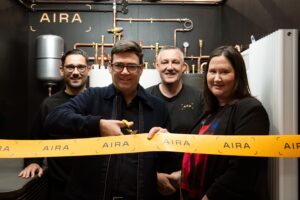Feeding the biofuel revolution
The question of whether farmers should use land for crops or energy has re-emerged after scientists in the US claimed bioenergy could actually help, instead of hindering food production.
A report by the International Food Policy Research Institute claimed it helps alleviate poverty and hunger, particularly in developing countries and bring much-needed investment into farming.
‘It’s a complete myth that land used for biofuels takes away land to the detriment of food production,’ commented the National Farmers’ Union’s expert on biofuels, Brett Askew.
‘UK agriculture is suffering from prices well below the cost of production and a lot of uncertainty in the industry. We currently have a large exportable wheat surplus and a need for a low-cost alternative to soya. The animal feed produced as a co-product of biofuels production can only benefit the dairy and livestock sectors. This, in turn, supports the arable sector.
‘We hope that the Department for Transport considers the findings of this report during its consultation on the impending crop cap for biofuel production,’ added Mr Askew.
Here in the UK, there is a small but growing market, which turns crops and agricultural waste into energy through both anaerobic digestion (AD) and biogas.
According to the latest Department for Environment, Food and Rural Affairs statistics, 122,000 hectares of agricultural land was used by for bioenergy in 2014, although this equates to just 2% of all the arable land in the UK.
The figures also show maize grown specifically to be used in AD accounted for 19% of all the maize grown in England in 2015, which amounts to 0.7% of the arable land.
‘Land has always been used for much more than just food production,’ said the Anaerobic Digestion and Bioresources Association’s head of policy, Matt Hindle.
‘If you go back before the oil revolution, we got all of our transport fuel from farmland in the shape of oats that fed horses.’
Mr Hindle said there are now more than 200 biogas and AD plants on farms around the UK, compared to just 20 seven years ago.
‘We think biogas/biomethane are particularly good forms of bioenergy. It generates a relatively good amount of energy for the land it uses and because it’s a gas, you can use it in a range of different applications, from home heating to fuel.
‘It also uses traditional farming crops, like maize and wheat, so you can incorporate it into farming rotations. You can grow an AD crop one year and a food crop the next year in the same field.’
But he also added there has been a ‘slow down’ in the number of new plants being built after the government cut various renewable energy subsidies last year.
‘There’s an opportunity for local authorities to think about their farming interests and also their responsibility for waste collection and treatment,’ added Mr Hindle.
‘The side of the industry that is interested in treating food waste for AD is very much reliant on councils collecting food waste and prioritizing AD. There’s a real chance for local authorities to think about those opportunities.’
Photo by alh1 















